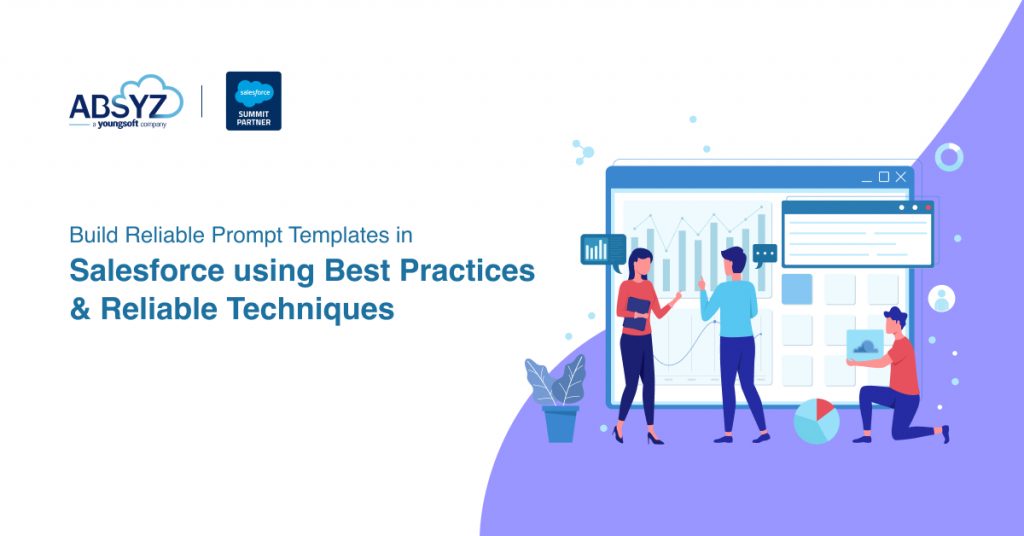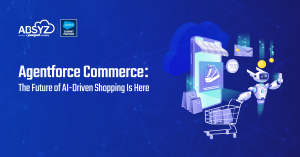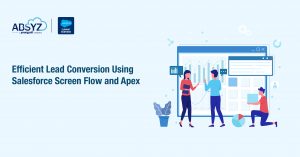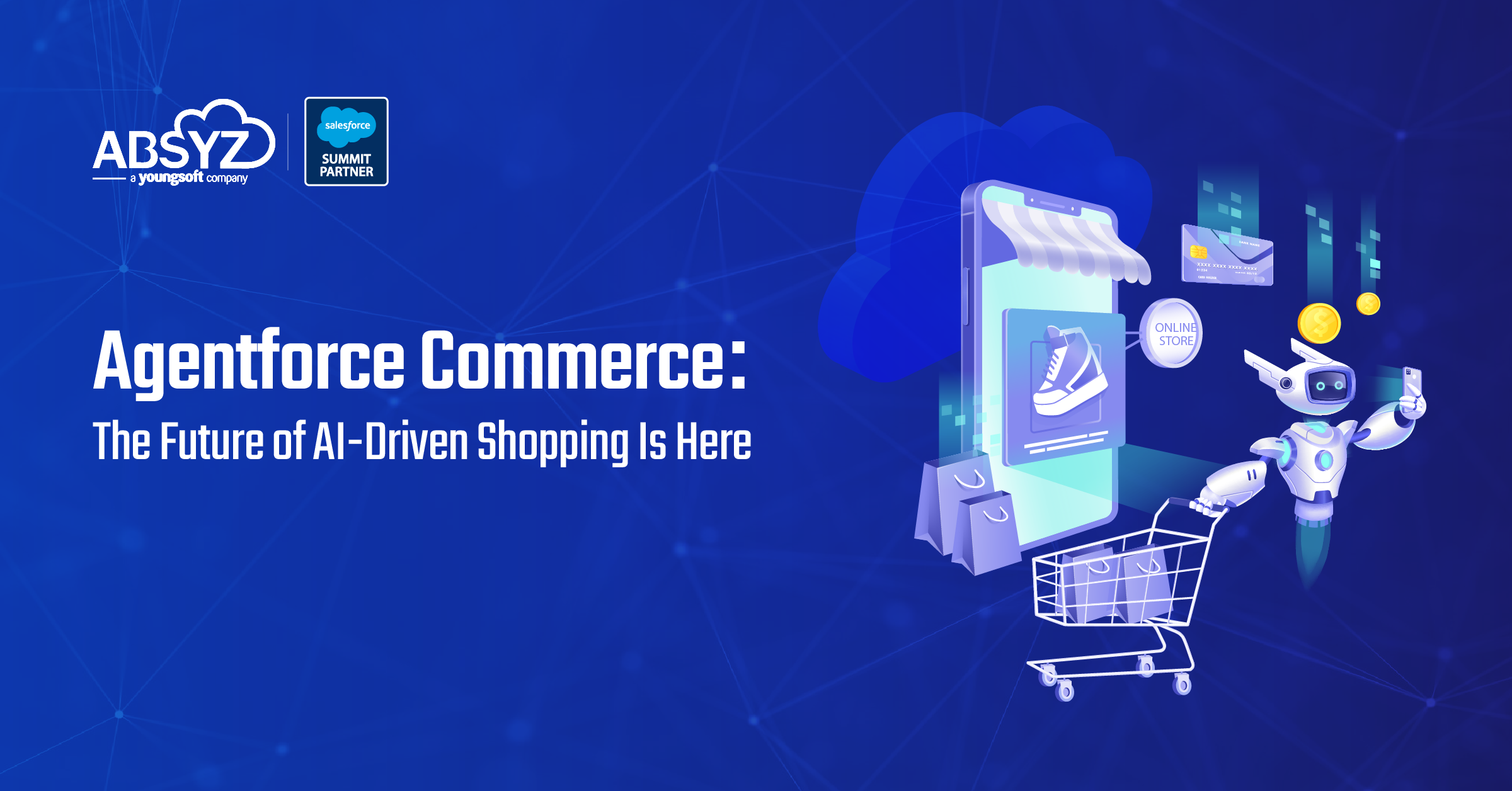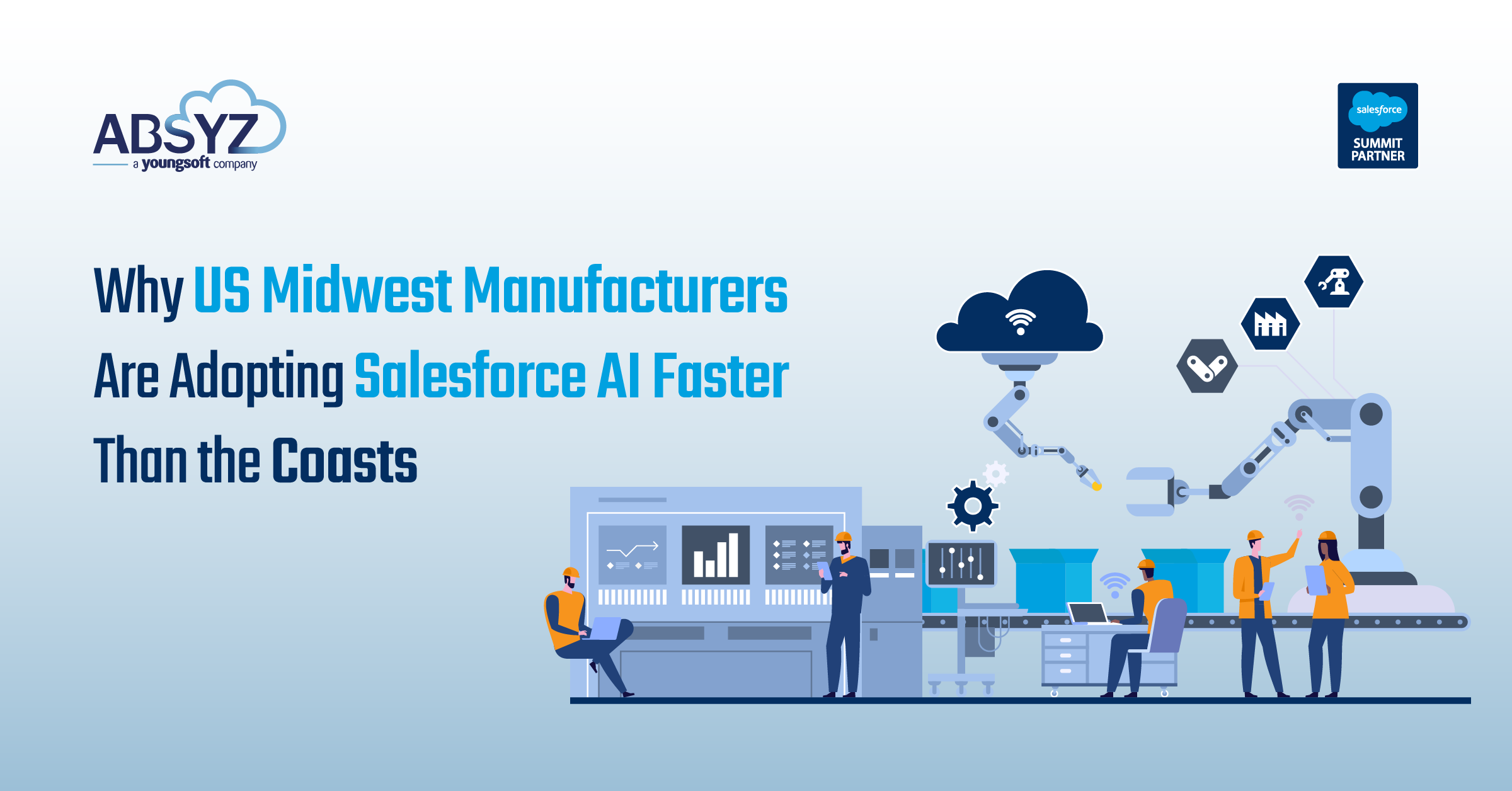Introduction
In the rapidly evolving landscape of enterprise AI, prompt engineering has emerged as a crucial skill that can make or break an organisation’s AI implementation. With Salesforce’s revolutionary Agentforce platform and Prompt Builder, businesses now have unprecedented power to create intelligent, context-aware AI Prompts that transform customer experiences and operational efficiency. This comprehensive guide will equip you with the knowledge and best practices needed to master prompt engineering & other best practices.
Understanding Prompt Engineering: The Foundation of Intelligent AI
Prompt engineering is the art and science of crafting precise, structured instructions that guide AI models to produce optimal outputs. Unlike traditional programming, where you write explicit code, prompt engineering involves writing natural language instructions that AI models can understand and respond to. This discipline has become particularly crucial as organizations seek to leverage large language models (LLMs) for business-critical applications.
In Salesforce, prompt engineering isn’t just about text generation. It’s about designing AI agents that can reason, decide, and act independently. This transforms static processes into intelligent, adaptable workflows. Every time you use Agent Builder, you’re doing prompt engineering. The Atlas Reasoning Engine behind Agentforce uses advanced prompts to classify topics, choose actions, and generate responses. Understanding this is essential for building effective AI solutions.
Salesforce Prompt Templates: The Building Blocks of Enterprise AI
A prompt template in Salesforce is like a smart framework that helps generate personalized, context-rich content using your CRM data, incorporating dynamic elements such as Apex, Flow, Data Cloud Retrievers, and Record Merge Fields to shape responses that make sense for your business. What makes it even more powerful is that it doesn’t just create text; it delivers trusted, data-driven content with a complete understanding of your business. It’s all about writing the correct instructions to achieve the best possible output that really works for you.
Best Practices for Effective Prompt Engineering
1. Establish a Clear Role Definition and Context
Role Specification: Define precisely what persona the AI should adopt. Instead of generic instructions, provide specific role definitions such as “You are a senior customer service representative with expertise in technical support for enterprise software solutions.”
Contextual Boundaries: Establish clear boundaries around what the AI can and cannot do. This is particularly important in enterprise environments where compliance and security are paramount.
2. Implement Structured Prompt Architecture
Effective prompts follow a structured approach that includes:
Task Definition: Clearly articulate the specific task the AI should perform. Be explicit about the desired outcome and any constraints.
Input Specifications: Define the format and type of input the prompt will receive. This includes data types, required fields, and any validation requirements that apply.
Output Requirements: Specify the expected output format, length limitations, and any formatting requirements.
Examples and Demonstrations: Provide concrete examples of the desired behavior. This few-shot learning approach significantly improves consistency and accuracy.
3. Leverage Salesforce-Specific Capabilities
Data Grounding: Utilize Salesforce’s RAG capabilities or Data Graphs to ground your prompts in real-time data. This ensures that responses are based on current and accurate information from your organisation’s systems.
Field Merge Capabilities: Leverage dynamic field merging to create personalised experiences. This allows prompts to adapt based on specific record data, user preferences, and contextual information.
Action Integration: Design your actions with clear names, descriptions, and input specifications to ensure seamless integration and consistency. The reasoning engine selects actions based on these elements, so descriptive naming is crucial.
Optimizing Instructions for Agentforce Actions and Topics
When building agents, understanding how the Atlas Reasoning Engine processes your prompts is crucial:
- Topic Classification: Ensure your topic names and descriptions are semantically distinct and comprehensive. The reasoning engine utilises these elements to classify user requests, making clarity and specificity essential.
- Instruction Clarity: Write instructions that are clear, actionable, and specific. The reasoning engine uses these instructions to guide decision-making, so ambiguous language can lead to unpredictable behaviour.
- Localize Action-Specific Logic: Keep guidance that applies to specific actions within the action configuration itself. This simplifies the instructions passed to the language model, reducing overall complexity.
- Validate Inputs and Embed Rules in Action Logic: Use Apex or Flows within actions to handle input validation, formatting, and business rules. Avoid relying on topic instructions, as they can lead to inconsistent behavior and reduced reliability.
- Use Absolutes Cautiously: Instructions that include strong directives, such as “must,” “always,” or “never,” are followed strictly by Agentforce, which may cause the agent to misinterpret or become stuck. Use such terms sparingly and remove them during troubleshooting to isolate issues.
- Use Positive Guidance: Frame instructions positively, e.g., “always verify the customer’s location” is more transparent and more effective than “don’t skip location verification.” Negative phrasing forces the LLM to infer the correct behavior.
- Group Instructions Together: It’s more effective to consolidate related instructions in a single instruction box (e.g., as a bullet or numbered list) rather than spreading them across multiple boxes.
- Start Simple and Iterate: Begin with minimal topic instructions. If the agent isn’t functioning as expected, simplify or remove topic instructions and shift complex or non-deterministic logic to a Prompt Template action type.
- Standardize Business Terminology: When the agent encounters unfamiliar business terms, ensure they are clearly defined and consistently used across the configuration to improve comprehension and response accuracy.
Prompting Techniques at a Glance
Here are a few prompting techniques that can be used in writing effective prompts. For a clear understanding of each prompting technique, refer to this blog: Click Here
| Technique | Description | When Effective | Example Use |
|---|---|---|---|
| Zero-Shot Prompting | No examples; relies on internal model knowledge | Simple classification, basic summarisation | Sentiment classification from notes |
| One-/Few-Shot Prompting | Guides with one or more examples | Formatting-sensitive tasks | Lead extraction from a transcript |
| System Prompting | Sets system-level output format and behavior | JSON output enforcement, tone consistency | JSON-only output instruction |
| Contextual Prompting | Injects session/record context | Personalisation, grounded responses | Product recommendation from account score |
| Role Prompting | Assign AI a defined persona | Regulated or domain-specific responses | Act as a support engineer |
| Step-Back Prompting | Coarse strategy before details | Strategic tasks, planning steps | Objection handling strategy |
| Chain of Thought Prompting | Step-wise reasoning with transparency | Multi-criteria decisions | Executing agent actions one after another based on conditions. |
| Self-Consistency | Repeats reasoning paths, picks consensus | Risk assessment, priority setting | Consensus from multiple CoT runs |
| Tree of Thoughts (ToT) | Explores multiple reasoning branches | Brainstorming, product evaluation | Retention negotiation plan |
| ReAct Framework | Combines reasoning with tool/API calls | Real-time reasoning with action | Refund eligibility and action |
| Automatic Prompt Eng. | Automates the prompt optimisation loop | Large-scale prompt optimisation | Dynamic generation of field extraction prompts |
Common Pitfalls and How to Avoid Them
1. Ignoring Salesforce limits
The Problem: When writing a prompt template instruction, we sometimes overlook Salesforce platform limits and focus too much on crafting a perfect solution.
The Solution: Implement prompt template instructions with a clear understanding of Salesforce limits to ensure optimal performance and reliability. Be mindful of restrictions, such as the maximum size of 128,000 characters, which can include up to 50 merge fields. Additionally, they allow up to 5 each of flow, Apex, related list merge fields, and Flex template inputs. And execution time constraints as outlined in the Salesforce documentation.
2. Overly Complex Prompt Design
The Problem: Many organisations attempt to create overly complex prompts that try to handle every possible scenario in a single template.
The Solution: Focus on specific use cases and create multiple specialised prompts rather than one universal solution. This approach improves maintainability and performance.
3. Neglecting Security and Compliance Considerations
The Problem: Prompts that don’t properly consider security implications can inadvertently expose sensitive information or violate compliance requirements.
The Solution: Implement security-first design practices, including regular security reviews, data classification, and access control validation.
4. Inadequate Error Handling and Fallback Mechanisms
The Problem: Prompts without proper error handling can provide confusing or inappropriate responses when encountering unexpected situations.
The Solution: Implement comprehensive error handling, including graceful degradation and precise fallback mechanisms that guide users toward successful outcomes.
5. Ignoring Performance Optimization
The Problem: Poorly optimized prompts can result in slow response times and a poor user experience.
The Solution: Optimise prompt length, minimise unnecessary API calls, and implement caching strategies where appropriate.
Example Scenario: Intelligent Lead Processing Solution
The Business Challenge
Sales teams waste hours manually qualifying leads, resulting in delayed follow-ups, inconsistent data, and missed opportunities. This bottleneck demands an intelligent solution that transforms lead management through automated AI-driven qualification and insight extraction.
Sales teams waste hours manually qualifying leads, resulting in delayed follow-ups, inconsistent data, and missed opportunities. This bottleneck demands an intelligent solution that transforms lead management through automated AI-driven qualification and insight extraction.
The Solution Architecture
An AI agent automatically calls new leads, conducts qualification conversations, and extracts structured insights in real-time. This end-to-end automation accelerates lead processing while ensuring consistent data quality and immediate actionability.
The Master Prompt Template: Call Transcript Analysis
The following prompt template serves as the cornerstone of this solution, demonstrating advanced prompt engineering principles in action:
Role: Your role is to be an experienced data analyst to extract key insights from a conversation transcript between an AI Sales Representative Agent and a customer who is looking to set up the business.
Task: Analyze the provided call transcript as input to extract specific details according to the keys and output them in a structured JSON format as specified in the Output Format.
Input Context: The following transcript represents a conversation between an AI Sales Representative Agent and a prospective customer exploring business setup opportunities. This conversation contains valuable business intelligence that must be accurately extracted and structured for effective use.
#### TRANSCRIPT START ####
{!$Input:.Call_Transcript__c}
#### TRANSCRIPT END ####
Output Requirements: Generate a JSON response that strictly adheres to the specified structure. Each field must be populated with precision, ensuring the extracted data can drive immediate business decisions and automated workflows.
Required Details:
- Call insights: Provide a comprehensive summary of strategic insights, including customer pain points, decision-making factors, competitive landscape mentions, and buying signals identified during the conversation.
- preferred_location: Extract specific geographical preferences, including zones, areas, neighbourhoods, or regions discussed for a property or business establishment, as well as any location-specific requirements or constraints.
- area_required: Extract the total space requirement in square feet as a numeric value, including any mentioned flexibility or expansion plans in additional_details.
- budget: Capture the financial commitment discussed, including budget ranges, financing options, or investment capacity as a numeric value in local currency.
- sentiment_score: Perform comprehensive sentiment analysis, considering enthusiasm level, objection handling, engagement quality, and overall conversation tone, to provide a numeric score ranging from 0 to 100.
- sentiment: Classify the overall conversation sentiment as “positive”, “negative”, or “neutral” based on the calculated sentiment score and conversation dynamics.
Data Quality Constraints:
– Maintain strict adherence to the specified JSON structure
– Assign null (without quotation marks) to any field where relevant information is not available
– Ensure all extracted data is factually grounded in the conversation content
– Apply consistent formatting standards across all responses
Response Format Example:
“`json
{
“call_insights”: “Customer is highly interested in a premium location with good foot traffic and parking. They’re concerned about setup costs but flexible on timing. While considering competitors, they value our standout customer service.”
“preferred_location”: “Downtown Business District, specifically Main Street corridor with preference for ground floor retail space”,
“area_required”: 2500,
“budget”: 150000,
“sentiment_score”: 78,
“sentiment”: “positive”
}
This prompt template exemplifies several sophisticated prompt engineering principles:
- Contextual Role Definition: Sets AI as a specialized data analyst with clear expectations.
- Structured Task Architecture: Separates input, processing, and output to avoid ambiguity and errors.
- Comprehensive Field Specifications: Guides AI to extract precise, actionable business insights.
- Quality Assurance Framework: Ensures data accuracy and consistency for reliable use.
- Practical Output Formatting: Uses JSON for easy integration with Salesforce workflows.
This real-world example demonstrates how sophisticated prompt engineering can transform complex business processes into automated, intelligent workflows that deliver immediate value while maintaining the quality and insight that human analysis would provide.
Conclusion
Prompt engineering in Salesforce is more than a technical skill. It’s a strategic advantage. Tools like Agentforce and Prompt Builder enable businesses to transform static processes into intelligent, adaptive workflows, all while meeting stringent security and compliance standards. Success in the AI era will belong to those who combine human insight with AI intelligence. Start with simple use cases, build expertise, and scale quickly. Investing in prompt engineering now sets the stage for stronger customer experiences and a long-term competitive edge.
Author: Yogesh Kumar Soni

